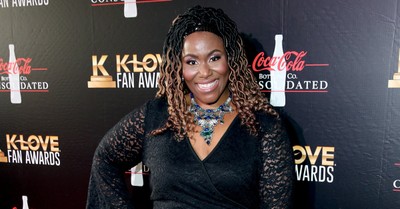The Next 1000 Years of Christianity
- Updated Feb 07, 2008
In a recent edition of Willow Creek magazine, Kevin Kelly tries to imagine the next 1000 years of Christianity. To put that in perspective, suppose we took a Christian in 1008 (maybe from Africa or Spain or India) and asked him to imagine what the church would look like in 2008. No matter what he said, he would be unlikely to mention podcasting. As Kelly rightly points out, if you took Christians from 1008 and dropped them into a 21st-century worship service, it likely would make no sense to them. In the same way it seems almost hopeless to dream about what the Christian church might look like in 3008. We are as helpless to properly imagine the future as our ancestors were a thousand years ago.
A thousand years is like what? A day in the sight of the Lord. We all know that. But what is a thousand years to us? It seems like an incredibly long time until you consider (as Kelly points out) that at the current lifespan of 70 years, a thousand years is only 13 generations from now.
Calculated this way 1,000 years doesn’t seem so distant, because this span of humans could fit around a dinner table. We could hold the list of 13 names, linking us and the year 3000 A.D., in our head. In terms of lifetimes — which are steadily increasing due to medical progress — 10 centuries is just next door.
Seen in that light, imagining the future doesn’t seem so hopeless. Kelly says that the best we can do is to offer plausible scenarios. He also points out that Christians have been looking for the Second Coming of Christ for 2000 years. That of course could happen at any time. But suppose Jesus doesn’t come back in the next ten centuries. What might the Christian movement look like? Here are Kelly’s five plausible scenarios:
1) The Center of Christianity Will Shift West.
This has been happening for centuries and the trend continues. In the not-too-distant future, the dynamic center of Christianity will be in Asia, mostly likely in China.
2) The Varieties of Christianity Will Continue to Increase.
Kelly points out that in 1800 there were 500 different denominations. Today there are 40,000. That number is bound to increase as the gospel penetrates diverse cultures around the world. Perhaps this means that in a few hundred years the Christian movement will be a confederation of very diverse groups joined more by culture and common heritage than by specific doctrinal beliefs.
3) The Margins of the Church Grow Fastest.
This is the most controversial point because Kelly uses the Mormons as an example. I don’t doubt that the general principle is true because growth and innovation in most established movements often starts at the edges, not at the center.
4) The Spiritual Dimension of Technology.
Technology drives nearly everything we do today for better or for worse. We cannot imagine living in a world without the Internet. Technology is a wonderful servant but a terrible master. Because there is no turning back from the march of progress, our great-grandchildren will face challenges in this area that we cannot begin to imagine.
5) Relations With Other Beliefs.
Technology leads us directly to this point. In the olden days (only 30-40 years ago), the great religions of the world were largely separated from one another. For most Americans, Muslims and Hindus and Buddhists were somewhere “over there,” on the other side of the world, far distant from our shores. Many Christians could go a lifetime without a meaningful interaction with someone of a radically different faith. Those days are long gone. For one thing, the people of the world have migrated to America so that (in the large cities, at least) you are likely to work with a Muslim or a Sikh, and your children are likely to go to school with classmates from Hindu families. And the Internet has created a way for people from many nations to interact with each other in a virtual world.
The great challenge of the next century (and perhaps beyond) will be the interaction between Christianity and Islam. Will it be a clash of civilizations or will there develop (as Kelly suggests) a Christian-Islamic partnership in the culture wars of the future?
If all of this futureology seems like vain speculation, it is good to remember that Christianity is a past/future faith. What we believe is rooted in specific events that happened at a particular time and place 2000 years ago. Our faith is not “upper-story” mythology. What we believe rests on the acts of God in human history. So in that sense we are rooted forever in the past. But as the Book of Revelation attests, we have a future faith that history will come to its divinely appointed conclusion when Jesus returns to the earth.
Between now and then we pass the faith along from one generation to another.
We take the faith once delivered to all the saints, and we pass it along so that
the unchanging message survives in an ever-changing world. Joel 1:3 says,
“Make sure you tell your children, and your children tell their
children, and their children their children. Don’t let this message die
out.” We take that seriously so that a thousand years from now, if it
pleases the Lord, the Christian movement will be stronger and more vibrant than
it is today.
You can reach the author at ray@keepbelieving.com. Click here to sign up for the free weekly email sermon.


















